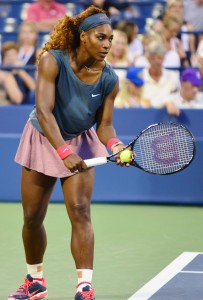On August 5, former WBNA star Becky Hammon was appointed as a full-time assistant coach to the San Antonio Spurs, making her the first female to hold this spot in the history of the NBA. The decision marks a significant step in professional sports teams’ efforts to bridge a divide between the male and female spheres. It is a message to the world of sports that says 16 seasons in the WNBA and being a six-time WNBA All-Star is perhaps just as valuable as the same NBA merits. Hammon’s appointment is a step towards carving out a space for female professional involvement in a male-dominated world of high-paying sports—a place where the role and skills of female athletes continues to be debated and ambiguous. But it should also remind us that even in the midst of hiring a well-qualified woman for a managerial position in the NBA, the wide disparities between professional sports leagues like the WBNA and their all-male counterparts continue to persist. This appointment offers us an opportunity to examine how many of these disparities are due to true biological differences or the pure supply-and-demand economics of sports, and how many of them are contrived.
A telling manifestation of the role women athletes play in public perception of sports can be found in the inequities between the salaries earned by male and female professional athletes. Indeed, Hammon’s new salary is representative of this massive financial gap. This year when she steps onto court as assistant coach in the NBA, she can probably expect to make a six-figure salary, perhaps eventually earning as much as $2.5 million each year. This is a comparative step up from the WNBA league maximum salary of $105,000 per year that Becky Hammon probably made as one of the league’s top 15 players of all time and probably more than she could have made as a WNBA assistant coach as well. Though it is unclear how economic disparities play into the larger picture of gender athleticism, it is worth considering what happens when female athletes are paid the same as men.
Professional tennis, one of the few areas in which women are catching up to men in athletic skill and pay, could provide us with valuable insight into this consideration. In professional tennis tournaments, both genders receive equal prize money — this year’s U.S. Open female champion, Serena Williams, is taking home $4 million—the largest cash prize ever awarded to a tennis player—male or female. Furthermore, the top ten fastest serves hit in the Women’s Tennis Association have been recorded in the last seven years, one of which was Sabine Lisicki’s record-breaking serve this year of 131 mph. While this record is still behind the male record for fastest serve, evidence indicates that these recent gains are indicative of an improvement in female athleticism in tennis. While a more alluring salary is not the main factor behind this catch-up in the tennis world, it serves as an example of what economic gender equality could look like in sports. Such equality may not make them more athletic, but it allows them better resources to step up their athletic game. Economic disparities can and do hamper the abilities of women to be taken seriously as professional athletes, often making it hard to get backing from sponsors without having to play up the female side of their title as female athlete. As U.S. Olympic hurdler Lolo Jones describes it in the ESPN documentary, Branded, “I have a chance to get sponsors every four years, and that money has to last. If you know anything about the Olympics, in between—those four years in between—it’s like the desert [financially speaking].” Fixing the gaps between male and female sports requires venturing farther than the passive explanations offered to us by supply and demand and biological gender differences.
There have been both international and national policy efforts to remedy these gaps—the 1972 U.S. Education Amendments that propelled Title IX into college athletics is a notable example. Prohibiting sex discrimination in sports and education in general, and setting unprecedented policies on sexual assault and harassment, Title IX sought to broadly bridge the gap between the treatment of male and female college students. As a result, it spurred a vast opening of new athletic opportunities for women beyond the conventional cheerleading and square-dancing. However, Title IX does not require equal spending on male and female athletic programs. Today, women’s college and high school athletic teams still lack equitable resources such as equipment and uniforms. Female college athletes receive $183 million dollars less in NCAA scholarships than male athletes. Even more telling is the fact that, although an estimated 80 to 90 percent of all educational institutions are not in compliance with Title IX as it pertains to sports (the penalty for which is the withdrawal of federal moneys), federal funding has never been cut from any of these institutions.

On the international level, similar efforts have also been made to promote global female athleticism. The 2012 London Olympics saw all 200 plus countries send female athletes to the games and there was harsh criticism of Saudi Arabia in 2012 by former Olympic minister Tessa Jowell for their discrimination against women in sports. But although there has been administrative and symbolic progress for women’s sports on the global scale, there still exist a host of social hostilities aimed at female athletes, like the comment made by 2014 Olympic coach for men’s ski jump, Alexander Arefyev, the banning of Indian sprinter Dutee Chand from the 2014 Commonwealth Games, and the recent decision by Saudi Arabia to exclude women from its team at this year’s Asian Games. Less overtly, there have been questions about Hammon’s own ability to coach men. These antagonisms can often make it difficult to perform one’s job adequately or to be taken seriously as an authoritative sports figure—perhaps one of the most damaging problems to female involvement in sports.
Fixing the gaps between male and female sports requires venturing farther than the passive explanations offered to us by supply and demand and biological gender differences. We need to acknowledge that there are public biases towards female participation in sports that influence the administrative, economic, and social aspects of female athletics. Becky Hammon’s appointment as assistant coach will not remedy the systemic differences between male and female sports. But it could do what changes to Title IX and the rules of the Olympic games cannot: provide us with a springboard for redefining how women play the game.
